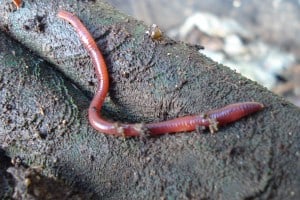Contents
This is the 3rd article our of 6 in our recently published Worm Farm Series.
So hopefully you now have a worm farm, and have it Part 2 : positioned in your garden somewhere that will allow you easy access, and make it simple to feed your worms. hopefully Part 1 : Part One of this series helped you to see that a worm farm is more than just a handy way to compost.
Which means it’s time to move some tenants in to your new worm home.
Before you do, though, you need to make sure their new home is nicely furnished so they have the best chance of settling in, and deciding to stay.
Furnishing for worms is pretty simple and there’s only minimal interior design knowledge required ; )
Setting Up Your Worm’s New Home
Because you’re starting from scratch with your worm farm, you need to introduce a few elements to create the right environment for your worms.
The first thing you need to add to your worm farm is bedding, which is where the worms will hang out and breed, before processing their bedding with the rest of the worm farm.
Bedding for your worms can be made up of compost, potting mix, humus, rotted pea straw, soil, paper or a mix of any of these mediums.
You need to fill your farm about 1/3 full with the bedding material then dampen down your bedding material, but don’t soak it. You want it just moist enough to be attractive to a worm (they won’t like it dry and coarse), but not sludgy and compacted.
Adding Your Worms
To get your worm farm off to a good start it’s recommended to have at least 500 grams of worms, or about 2000 full grown worms. Although, obviously the more worms you start with, the quicker your farm will really get going.
Over time, you want your worm farm to increase to it’s full population of around 10’000 worms and in a healthy, productive worm farm, this will take about 9-12 months.
Don’t worry about your bin getting over run with worms. Worms will naturally regulate their number to meet the requirements of the amount of food you are processing.
What Kind Of Worms Do You Want?
There is a specific kind of worm that are preferred worm farm inhabitants.
You’re not looking for your standard garden variety worm here, you want composting worms, known as Tiger Worms or Red Worms.
These types of worms thrive in compost conditions. They tend to dwell in the top surfaces of their environment, so naturally move towards the fresh new layers of food or compost provided for them.
They are prolific eaters and can process their own body weight in food every day.
Compost worms are reasonably easy to come by, but as I say, you won’t be picking them out of your garden. Do a search on Google for Tiger Worms, Red Worms or Compost Worms in your area, and you should be able to locate a supplier pretty easily.
A container of worms can range from $10-$20 depending on how many worms you are getting, and whether you are buying from a professional worm breeder, or just a home supplier with an excess of worms.
One thing to be careful of is to make sure the container actually has a good quantity of worms in it, and is not just filled with bedding. Make sure you are getting what you have paid for.
- Frabill | Trusted By Anglers Since 1938
- Thick insulated foam construction regulates temperature
- Ventilation in lid promotes airflow to keep worms healthy
- Includes: Super-Gro worm bedding
This keeps the worm farm moist, and dark, two conditions that worms LOVE! The darkness will encourage your worms to stay in the top surfaces of your worm farm, and allow them to do their thing, protected from the light.
Right, so it’s time to get your worm farm all set up, and then it’ll soon be time to start feeding your worms. In the next post we covered Part 4 : which foods you should, and should not, fee your worms and how to maintain a healthy, productive worm farm.
Want to know more about gardening ?
Fill in your email address in the form below and you'll receive all the latest updates directly in your in-box.
Thank you for subscribing.
Something went wrong.
Last update on 2024-04-11 / Affiliate links / Images from Amazon Product Advertising API


